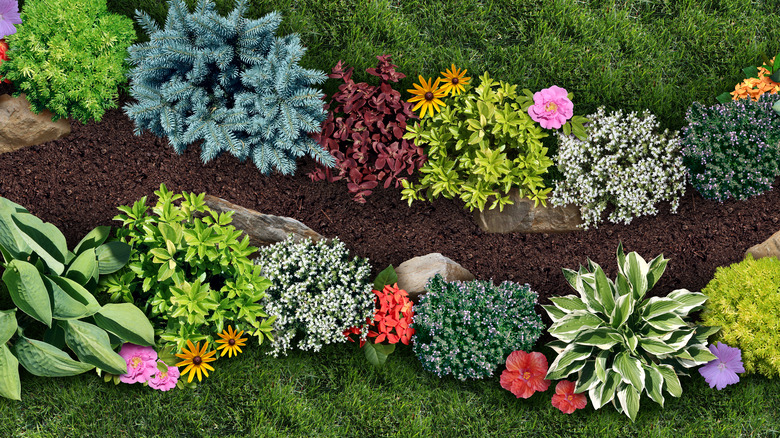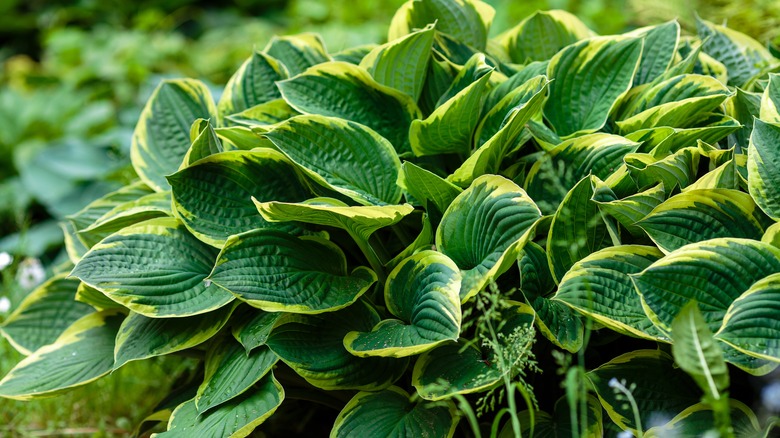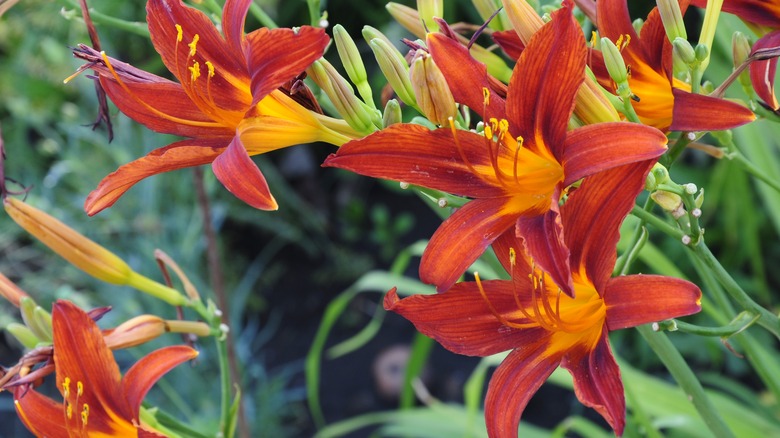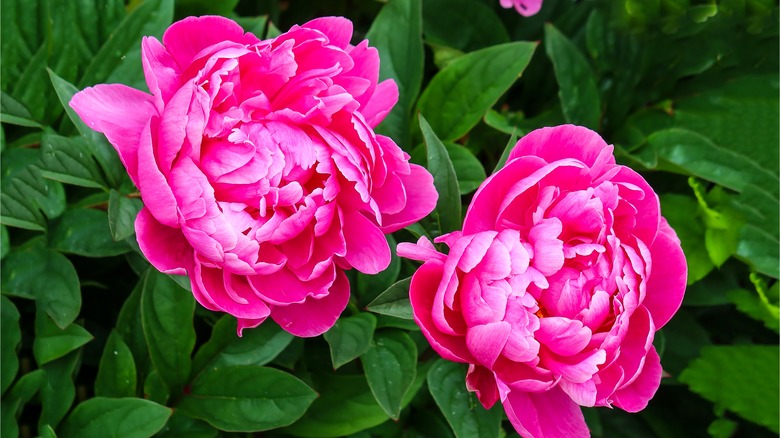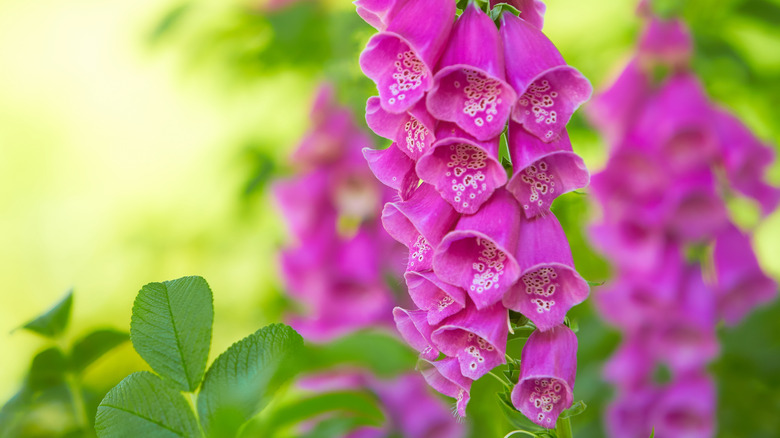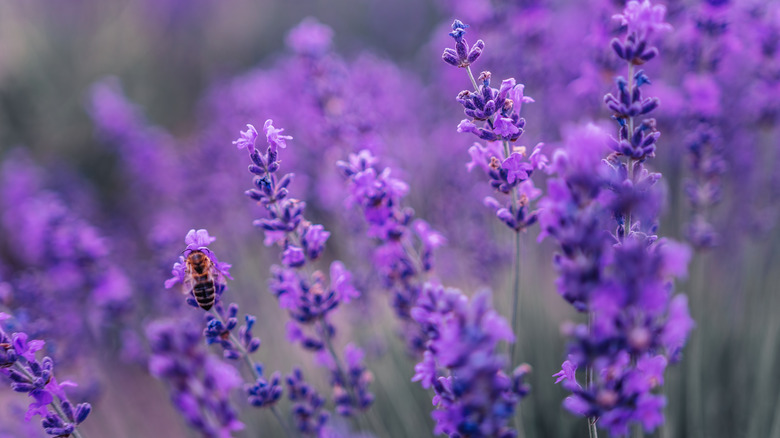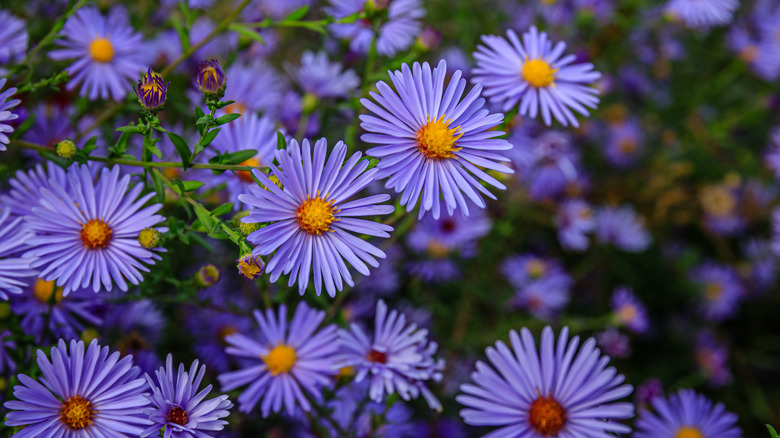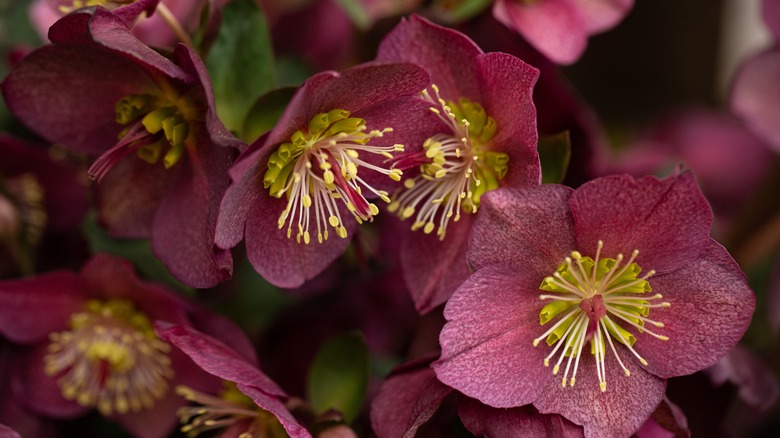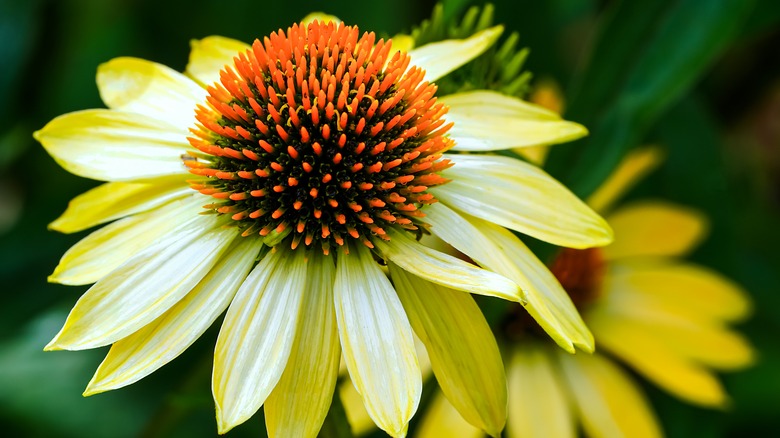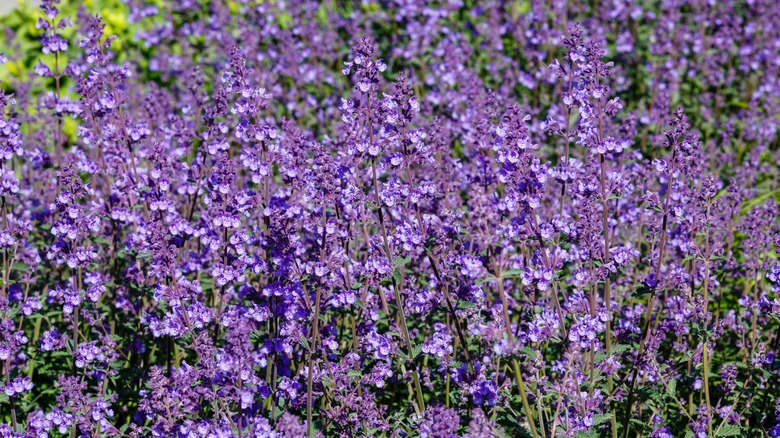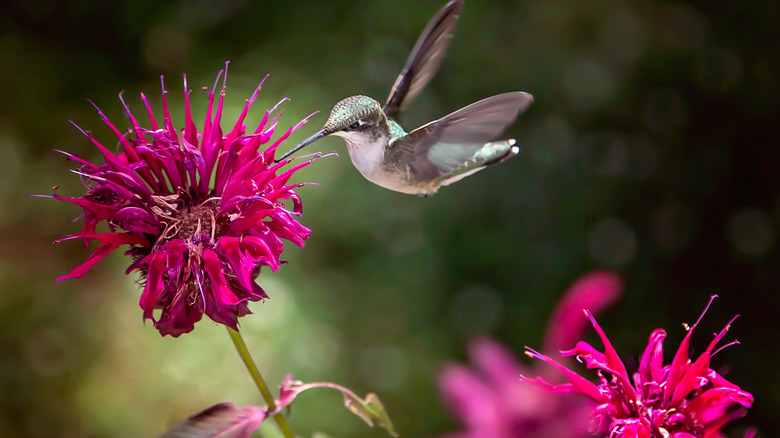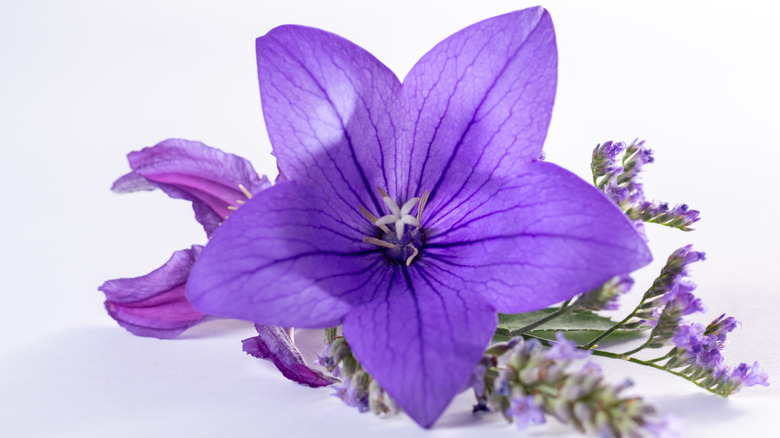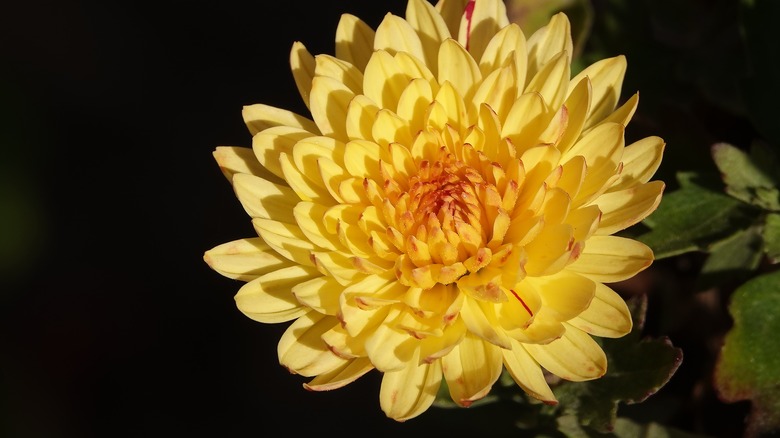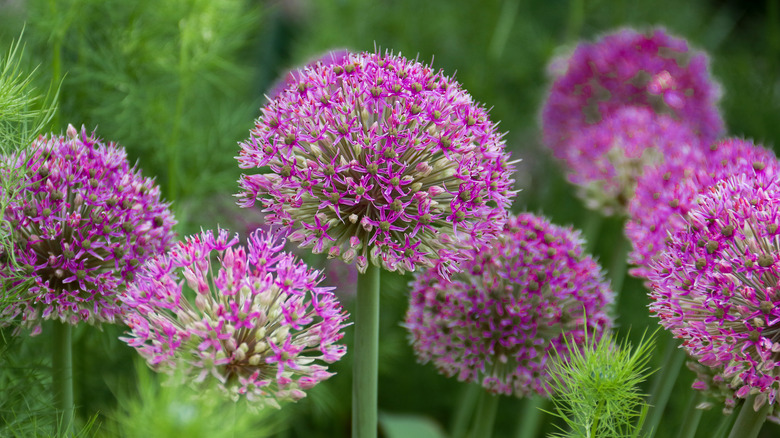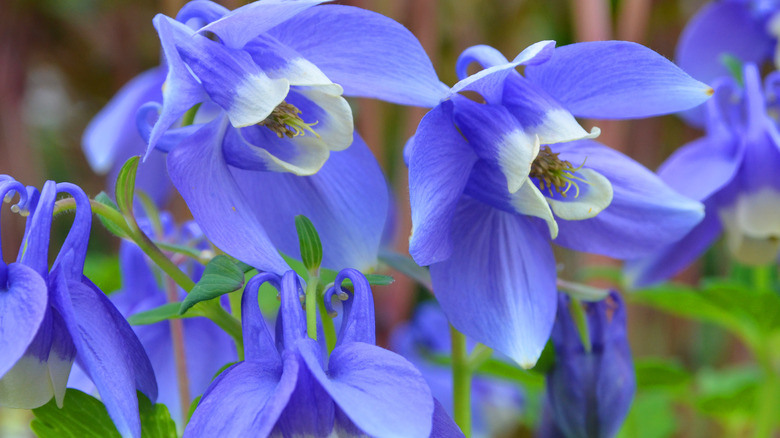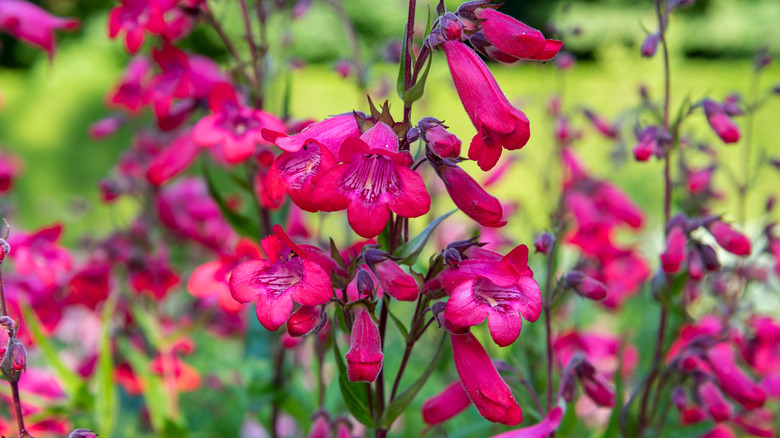15 Perennial Plants That Will Last For Decades
As much as you want a gardener's bragging rights, admit it, gardening can be stressful. Sometimes, we just want to relax and take in the beauty of our growing flowers and plants. We don't want to be in the garden every year, trying to grow a new plant from scratch as is common with annual or biennial plants.
Gladly, we don't have to, since there are perennial plants. Perennials are plants that last much longer than a year or two after planting. Some plants even stay much longer than the humans who planted them.
If you're seeking to add some everlasting beauty to your garden, perennials are always a great option. Trust us when we say you can never go wrong with these babies. Even more, some of them are low-maintenance, taking out that yearly stress. All you have to do is just watch them bloom and grow as each year goes by. Today, we've curated for you an A-list of perennials that will last for decades. Enjoy.
Hostas
According to the experts at Gardening Know How, the hosta plant is an all-time favorite. As Perennial Resource explains, hostas offer gardeners versatility, given the shape of their leaves and the colors they produce. Hostas are among the bestselling perennials in the U.S. The popular perennials are shade-tolerant and come from the Asparagaceae family.
Bloom Season: Summer, fall
USDA Growing Zones: 3 to 9
Growing Conditions: Partly sunny, full shade
Soil Type: Slightly acidic rich organic soil
Size: 6 to 8 inches tall, 18 to 24 inches wide
Daylilies
Unlike the literal meaning of its name, the daylily (genus Hemerocallis) doesn't last only a day. If it did, it wouldn't even be here on this list of perennial plants that will last for decades. According to Gardener's Supply, the botanical name of the daylily means "beauty for a day," which is in reference to its blooms — the flowers open in the morning and close (die) by night. Further, per the Old Farmer's Almanac, the inclusion of "lily" in its name is also a bit misleading as the perennial daylily isn't a lily.
Bloom Season: Spring, summer, fall
USDA Growing Zones: 4 to 9
Growing Conditions: Full sun
Soil Type: Varies but slightly acidic to neutral pH
Size: 2 to 8 inches wide, 8 inches to 5 feet tall
Peonies
Peonies (Paeonia spp.) are one of the most popular perennial flowers (via Garden Design). They're also known to grow for decades and decades, allowing generations to enjoy their garden beauty (via Hidden Springs Flower Farm).
Peonies bloom flowers that give off sweet fragrances. They also come in different colors and sizes. To properly cultivate peonies, Gardenia says all you need is a neutral pH and regular care.
Bloom Season: Spring, summer
USDA Growing Zones: 3 to 8
Growing Conditions: Full sun
Soil Type: Well-drained, slightly acidic pH
Size: 3 feet tall, 3 feet wide
Foxglove
Another perennial favorite is the foxglove (Digitalis purpurea); although, compared to its perennial counterparts, foxgloves tend to be short-lived (three to five years, per Homes & Gardens). Gardening Know How, however, says growing foxglove in balanced soil can encourage regrowth. In other words, can't be too soggy, can't be too dry — just right, the way Goldilocks would like it.
Bloom Season: Summer
USDA Growing Zones: 4 to 8
Growing Conditions: Full sun, part shade
Soil Type: Well-drained, pH 5.5 to 6.5
Size: 2 to 3 feet tall, 4 to 5 feet wide
Lavender
Looking for long-lasting perennials to add some pizazz in sight and scent to your garden? Then lavender (Lavandula angustifolia) is just for you. Although with a name like "lavender," one would expect a purple shade, these perennials sport a gray to green variant. According to the Old Farmer's Almanac, this perennial is great for easygoing gardeners because it's not particular when it comes to soil, and pollinators think it's a winner.
Bloom Season: Summer
USDA Growing Zones: 5 to 10
Growing Conditions: Full sun
Soil Type: Sandy, alkaline/basic pH
Size: 2 to 3 feet tall, 2 to 4 feet wide
Asters
Did you know that with very little work, you could add elegant colors to your garden's autumn landscape year after year? Well, Gardening Know How claims that the Aster (Aster spp.), whose daisy-like shaped flowers are a perfect fit for the fall season, can provide lovely pops of color to your garden just as the weather starts to change. This is because when most flowers begin to run their course for the summer, this one takes to full bloom.
Bloom Season: Summer, fall
USDA Growing Zones: 3 to 8
Growing Conditions: Full or part sun
Soil Type: Varies, pH varies as well
Size: 1 to 6 feet tall, 1 to 4 feet wide
Hellebore
The more common name for the hellebore (Helleborus orientalis) is the Lenten rose and, according to Garden Design, the spring perennial got its name due to when its flowers bloom, which is, as you might have guessed, near the six-week celebration of Lent.
If you're familiar with the pollination cycle, you'll know that around the time of Lent, there are fewer pollinators flying around. Per Gardeners' World, however, this only makes hellebores even more attractive to the pollinators that pass by.
Bloom Season: Spring
USDA Growing Zones: 3 to 9
Growing Conditions: Full sun
Soil Type: Rich organic matter, slightly alkaline pH
Size: 9 to 18 inches tall, 12 to 24 inches wide
Coneflower
Coneflower (Echinacea spp.) is a plant classified with the daisy family. These perennials grow extremely fast and also last for years; hence, their placement on our list of perennials that last for decades. Perhaps you had an ancestor who once used these perennials to remedy a cold or flu (via Planet Natural).
For best garden results, Miracle-Gro recommends planting coneflowers where they'll get at least six to eight hours of sun per day.
Bloom Season: Summer, fall
USDA Growing Zones: 3 to 9
Growing Conditions: Full sun
Soil Type: pH varies
Size: 2 to 4 feet tall, to 3 feet wide
Catmint
Not to be mistaken for catnip, the catmint (Nepeta spp.) is a non-aromatic flower that sports soft gray-green leaves. The perennial's lavender-blue flowers make them a solid replacement for lavender, according to Piedmont Master Gardeners. This garden hack isn't just due to the flowers' similar colors, but also because of their similar tendencies of covering rose bushes.
Bloom Season: Spring, summer, fall
USDA Growing Zones: varies
Growing Conditions: Full sunlight shade
Soil Type: Slightly acidic or neutral pH
Size: 10 to 24 inches tall, 12 to 24 inches wide
Bee balm
Ever come across a perennial with unconventional square stems? If you have, we'd bet it was a bee balm (genus Monarda). Historically used for medicinal purposes (per NC State Extension), this herb is also a favorite of pollinators like hummingbirds, bees, and butterflies. According to Plant Addicts, the perennial offers not only attractive colors but a minty, orange scent.
Bloom Season: Summer
USDA Growing Zones: 3 to 9
Growing Conditions: Full sun
Soil Type: Varies, pH 6 to 7
Size: 2 to 4 feet tall, 18 to 24 inches wide
Balloon flowers
Gardener's Path says these perennials derived their names from the puffy balloon-like buds that burst open into starry bell-like blossoms. Balloon flowers (Platycodon grandiflorus) are disease-resistant flowers that can add blooms of blue, pink, and white to your perennial garden.
One major tip in growing these perennials is to make the soil rather porous and loose, so the roots stand firm, giving it the best chance to last for decades, per All About Gardening.
Bloom Season: Summer
USDA Growing Zones: 3 to 8
Growing Conditions: Full sun
Soil Type: Rich organic matter, pH 5.5 to 7.5
Size: 6 to 12 inches tall, 1 foot wide
Chrysanthemums
According to Funny How Flowers Do That, chrysanthemums (Chrysanthemum indicum) have been used throughout history for their believed medicinal properties. As Healthline notes, mum studies have backed up the perennial's use in herbal medicine and home remedies, though more research is needed.
To thrive, chrysanthemums require rich soil and full sun. They also need good air circulation to bloom in their array of colors, which include white, yellow, lavender, purple, and red.
Bloom Season: Summer, fall
USDA Growing Zones: 5 to 9
Growing Conditions: Full sun
Soil Type: Rich and organic
Size: 2 to 3 feet tall, 1 to 3 feet wide
Allium
We love trailblazers, and the allium (Allium giganteum) is on that list. According to Britannica, allium was among the first spherical clusters ever discovered. And Garden Therapy explains that this perennial is part of the same family as onions, garlic, and chives.
NC State Extension says allium can be cultivated in flower beds and is an excellent partner for daylilies and low grass.
Bloom Season: Summer
USDA Growing Zones: 5 to 9
Growing Conditions: Full sun
Soil Type: Moist soil
Size: 6 to 12 inches tall, 6 to 12 inches wide
Columbine
Columbines (Aquilegia Vulgaris) are perennial spring plants that offer beautiful color combinations. American Meadows says these plants require little care from the gardener and will re-seed on their own once established, which explains how this perennial can last for decades.
For the best growing results, plant columbines (a favorite of hummingbirds, per Gardening Know How) in the early spring or fall in organically rich and well-draining soil.
Bloom Season: Spring
USDA Growing Zones: 3 to 8
Growing Conditions: Full sun
Soil Type: Rich organic matter, well-drained
Size: 6 to 12 inches tall, 1 to 3 feet wide
Penstemon
Gardenia says that penstemons (Penstemon digitalis), also known as beardtongue, are brilliant performers in the summer, easy to grow, and versatile enough to be placed anywhere in your garden.
Since the penstemons are short-lived perennials, though, like the foxglove, you're better off pruning them in the spring, per Gardeners' World. The good news for brown thumbers, penstemons are known to grow well without much effort as long as the right factors for planting are observed.
Bloom Season: Summer
USDA Growing Zones: 4 to 9
Growing Conditions: Full sun
Soil Type: Well-drained, slightly alkaline
Size: 1 to 3 feet tall
